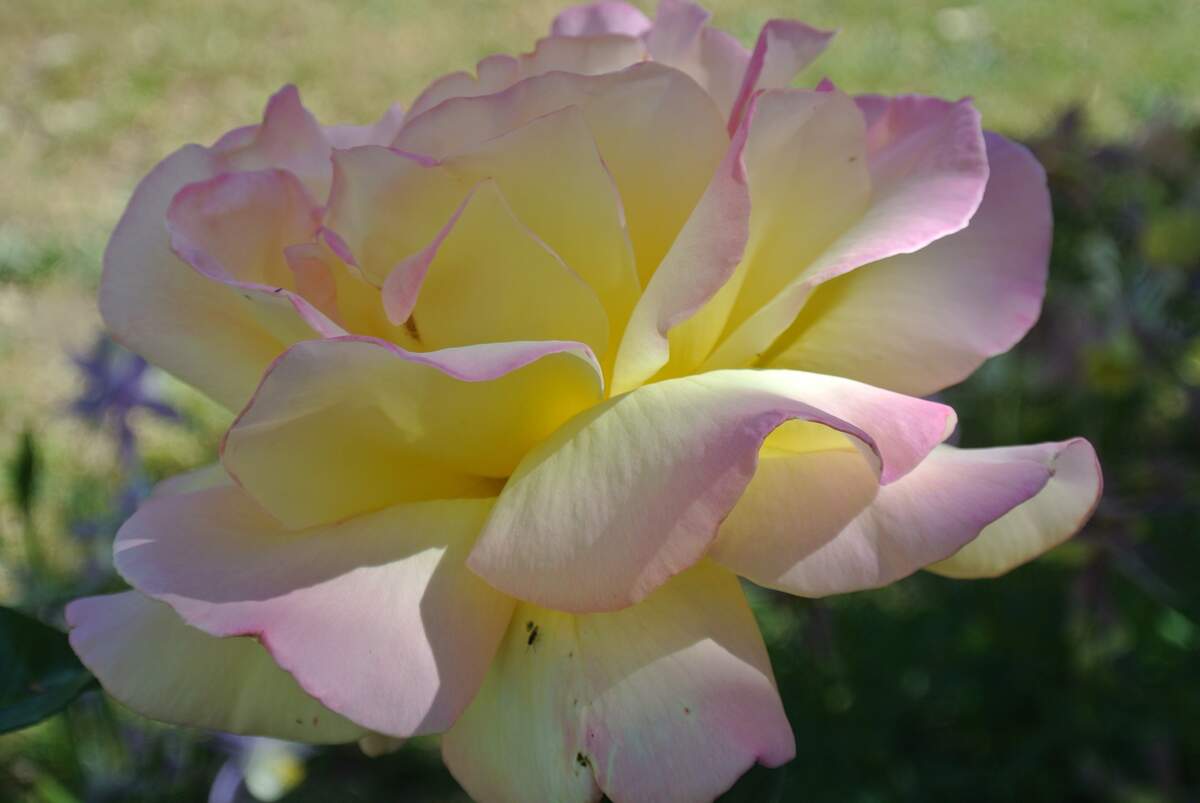

National Peace Rose Day
Known as the most popular rose of the twentieth century, the Peace rose is honored and celebrated today, on the anniversary of the public announcement of its American trade name. On April 29, 1945, the name "Peace" was announced by the Conard Pyle Company in Pasadena, California, at the Pacific Rose Society's first rose show. At the same time, on the other side of the world, the city of Berlin was falling to the Allies, which was one of the final turning points of World War II. The rose came to symbolize the hope that sprouted as the war ended.
Peace roses have larger yellow to cream-colored flowers with slightly crimson-pink petal edges. Factors such as weather and location influence variations on color. They are hybrid tea roses that give forth a fruitlike fragrance. They are durable and vigorous: shrubs may grow up to six-and-a-half feet in height and over four feet in width, they are resistant to disease and can grow until the time of the first frost.
Francis Meilland, a horticulturist and member of a prominent rose-breeding family from Lyon, France, developed the Peace rose between 1935 and 1939. He hybridized the flower in 1935 by crossing a hybridized tea rose known as Margaret McGredy with another seedling. The Peace rose was first known by the number 3-35-40, which meant it was the third hybridization of 1935 and it was the 40th cultivar selected for testing. The plant first produced flowers in the fall of 1936, and Meilland began growing the flowers in his rose fields in 1939.
Soon afterward, as World War II began and as Germany approached France, Meilland sent cuttings of the rose to friends in Turkey, Germany, Italy, and the United States. It may have been sent to the United States on the last plane—or at least one of the last planes—that left the country before the Germans invaded. By one account, the rose was taken out of the country in an American diplomatic pouch.
Meilland named the rose Madame A. Meilland, after his late mother. He introduced it as such to French gardeners in 1942, and this is the formal name that it still holds today. But as it made its way to various countries, it was given many other names. In Italy it became known as Gioia, which means joy; in Germany it became known as Gloria Dei, meaning glory to god; and in Sweden, Norway, and the United States, it became known as Peace.
Robert Pyle of the Conard Pyle Company, which was based in West Grove, Pennsylvania, gave it its American name. As the war raged in Europe, Pyle cultivated the rose and sent samples to the American Rose Society for it to be reviewed. After Germany left France, in 1944, he was able to communicate with Meilland, and he told him he would introduce the rose to the American public as the war ended. Pyle gave it the name Peace in honor of the impending global peace.
During the month following the announcement of the rose's name in Pasadena, Peace roses were given in honor of Germany's surrender to each delegate at the inaugural United Nations meeting in San Francisco. The roses were sent by American Rose Society Secretary Ray Allen along with a note: "We hope the Peace rose will influence men's thoughts for everlasting world peace."
The peace rose has been given numerous awards such as the All-America Rose Selections Award in 1946, the American Rose Society National Gold Medal Certificate in 1947, and the Gold Rose of the Hague in 1965. In 1976, it was chosen as the "World's Favorite Rose," and was inducted into Rose Hall of Fame, the first rose to be given the distinction. By 1992, over 100 million Peace rose plants had been sold, and its popularity continues today.
How to Observe National Peace Rose Day
Celebrate the day by planting or buying some Peace roses! If you really want to get out and smell the roses, you could visit a rose garden. But, if you'd rather stay at home, get some roses delivered to you or do some reading about roses. Some book ideas include Roses or Classic Roses by Peter Beales. Beales wrote in Roses, "'Peace,' without a doubt, is the finest Hybrid Tea ever raised and it will remain a standard variety forever."





















